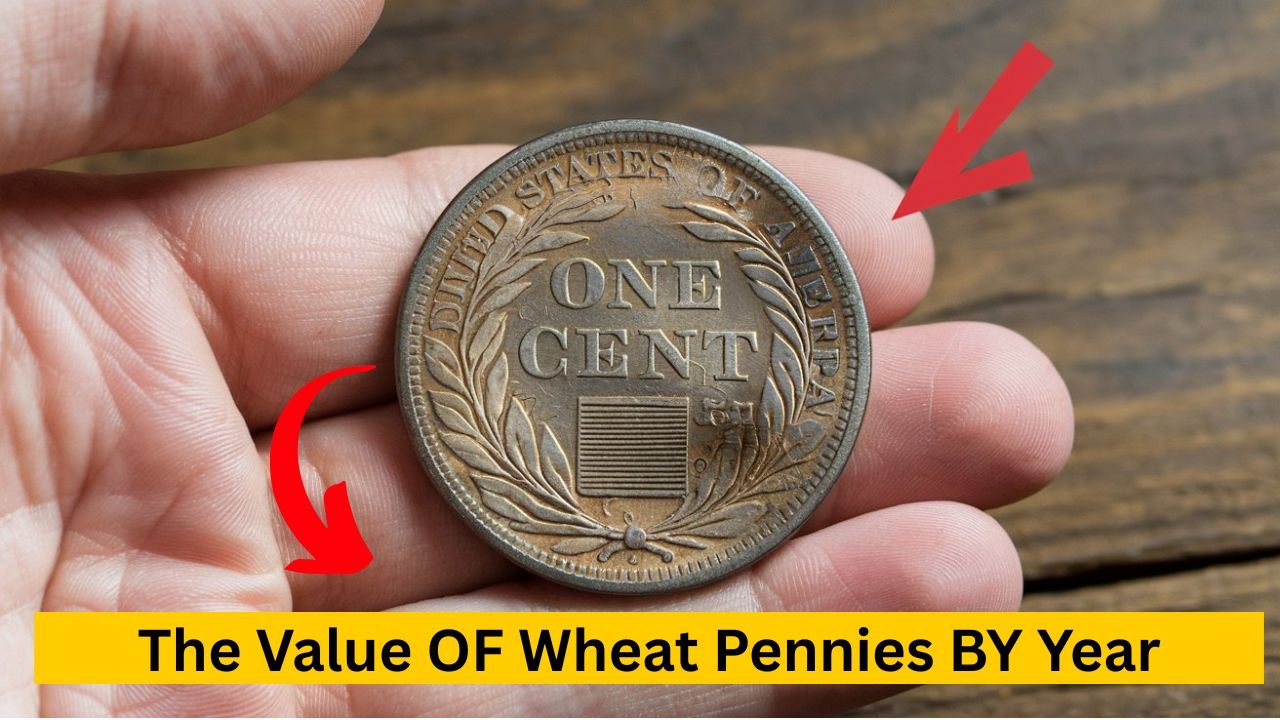The Value of Wheat Pennies By Year: For coin collectors, the Lincoln Wheat penny holds a special place. Struck from 1909 to 1958, these iconic cents feature Abraham Lincoln on the obverse and two wheat stalks on the reverse — giving them the nickname “Wheat pennies.” While millions were minted, their values vary widely depending on the year, mint mark, rarity, and condition. Some are worth only a few cents, while others can sell for thousands of dollars.
This guide provides an overview of Wheat penny values by year and highlights the key rarities every collector should know.
The Kennedy Half Dollar Valued at $5.9 Million, Still in Circulation
The First Wheat Pennies: 1909
The Wheat penny debuted in 1909 to mark the 100th anniversary of Abraham Lincoln’s birth. Two versions were struck:
-
1909 VDB: The initials of designer Victor David Brenner (“VDB”) were placed on the reverse. Millions were minted in Philadelphia, and they remain affordable for collectors.
-
1909-S VDB: Minted in San Francisco with only 484,000 coins, this is one of the most famous key dates in U.S. coinage. Even in worn condition, it can bring several hundred dollars, while higher grades reach thousands.
Scarce Early Dates: 1910s
-
1914-D: Struck in Denver, this is another highly sought-after rarity. With a mintage of just over 1.1 million, values range from several hundred dollars in low grades to thousands in uncirculated condition.
-
1922 (No D): A famous minting error from Denver where the “D” mint mark failed to strike. Genuine examples are rare and can sell for significant sums.
Most other Wheat pennies from the 1910s are worth between 25 cents and $5 in circulated grades, though pristine examples can be much higher.
The Lincoln Wheat Penny Valued at $49,00, Still in Circulation?
The 1920s and 1930s
During these decades, mintages increased, but collectors still prize certain years:
-
1924-D and 1931-S are semi-key dates, with lower mintages making them more valuable.
-
Common years, such as 1920, 1927, or 1930, are typically worth under a dollar in circulated grades but more in higher conditions.
The Great Depression era produced fewer saved coins, so uncirculated specimens from the 1930s can be surprisingly valuable.
Wartime Pennies: The 1940s
World War II brought unusual changes to U.S. coinage:
-
1943 Steel Cents: To conserve copper for the war, pennies were struck in zinc-coated steel. These are common but popular with collectors, worth 25 cents to a few dollars.
-
1943 Copper Penny: A rare minting mistake left a handful of copper planchets in the presses. These coins are among the most famous U.S. rarities, with some selling for over $100,000.
Other Wheat pennies from the 1940s are generally common, though high-grade examples remain collectible.
The 1950s: The Final Years
The last decade of the Wheat penny saw very large mintages, making most dates quite common.
-
Coins like the 1955 Double Die Obverse — a striking error where the date and lettering appear doubled — are highly valuable and sought after, with prices ranging from thousands to tens of thousands.
-
Regular 1950s Wheat pennies often trade for just a few cents above face value in circulated grades but can still hold appeal for beginning collectors.
Factors That Influence Value
While the year and mint mark are crucial, other elements affect Wheat penny value:
-
Condition: Coins with little or no wear (graded Mint State) are worth far more than circulated ones.
-
Mint Marks: “D” (Denver) and “S” (San Francisco) coins often had lower mintages than “no mint mark” (Philadelphia) coins.
-
Errors and Varieties: Misstrikes, double dies, and other anomalies can make an ordinary year extremely valuable.
Final Thoughts
The Lincoln Wheat penny remains one of the most beloved American coins, both for its history and for the thrill of finding a rare piece among common dates. While many Wheat pennies are worth only a few cents, key dates like the 1909-S VDB, 1914-D, 1922 No D, 1943 Copper, and 1955 Double Die can bring hundreds, thousands, or even six figures at auction.
For collectors, building a year-by-year set is both a rewarding challenge and a journey through American history — proving that sometimes, the smallest coins carry the greatest stories.
